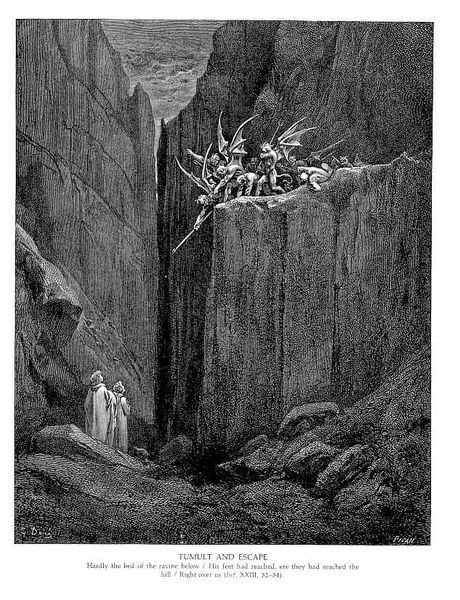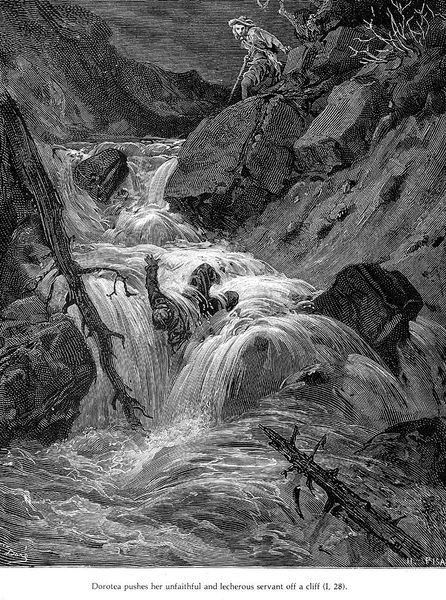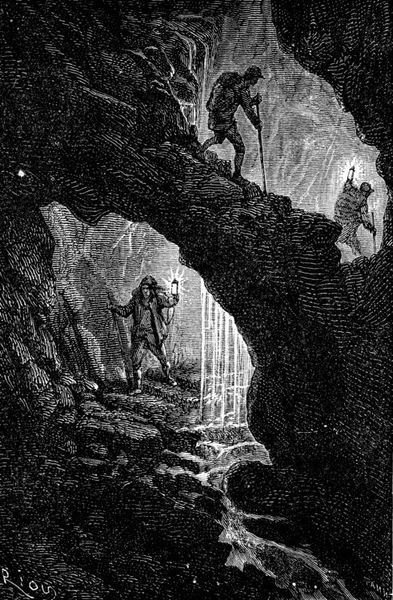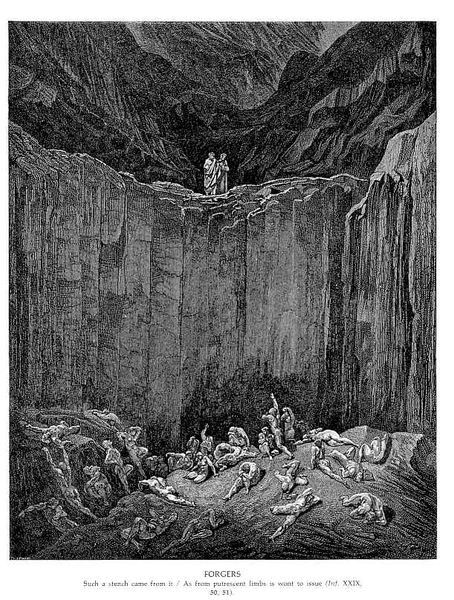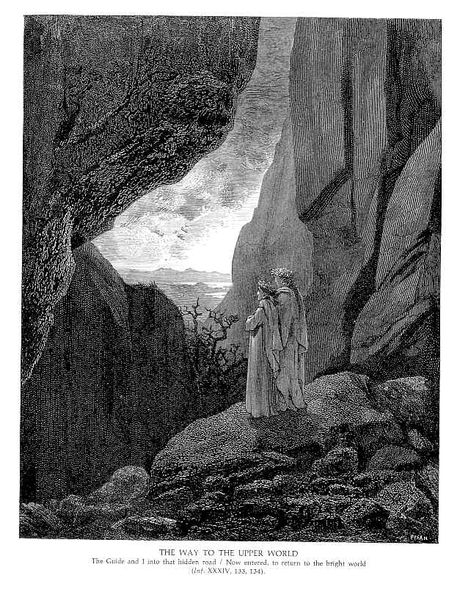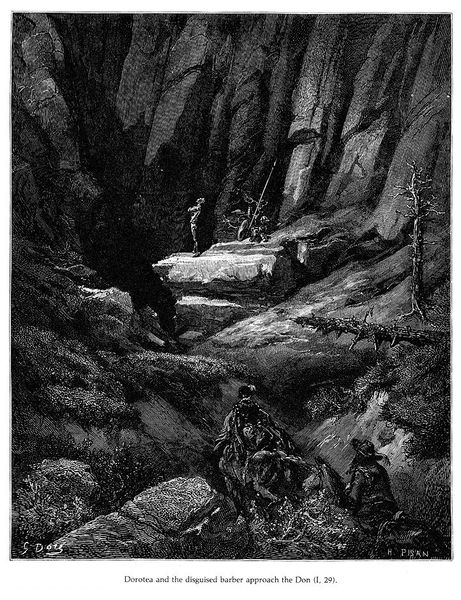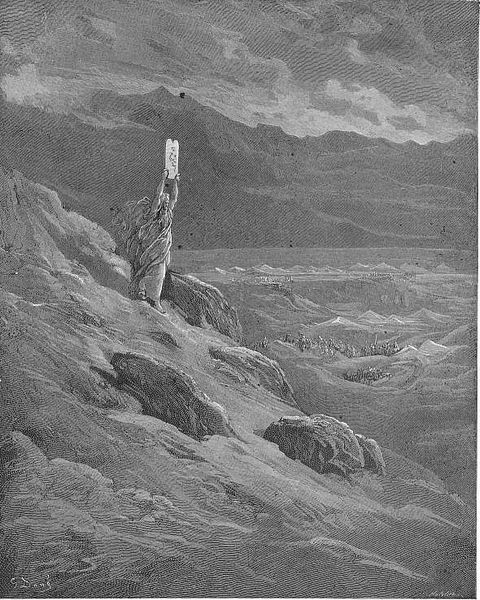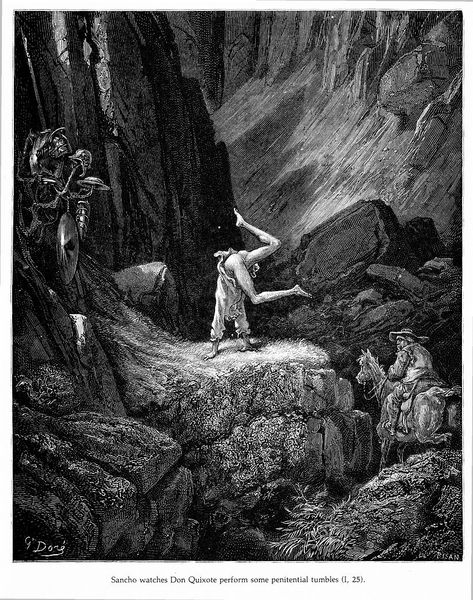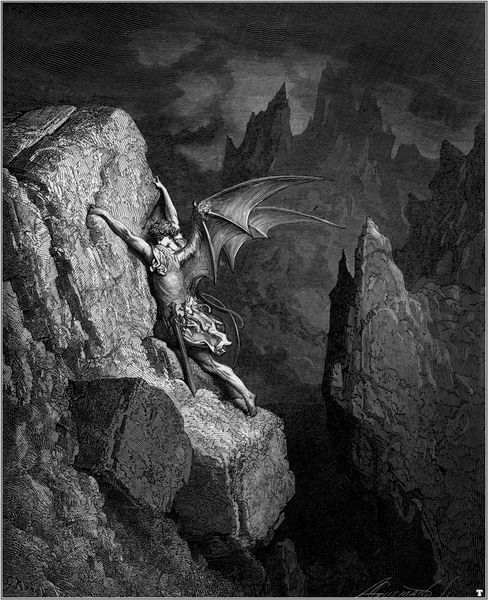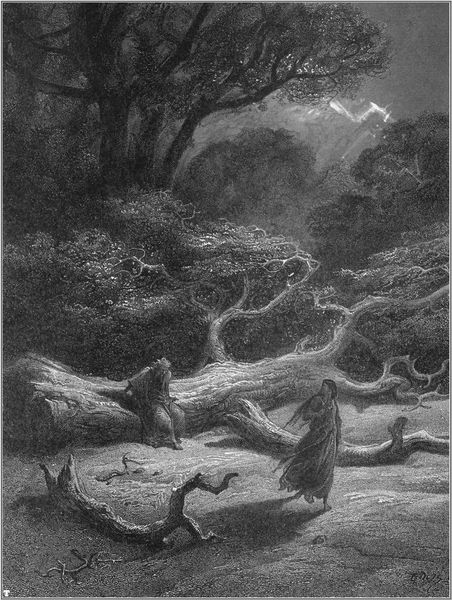
drawing, charcoal, engraving
#
drawing
#
pencil sketch
#
landscape
#
charcoal drawing
#
figuration
#
rock
#
romanticism
#
natural-landscape
#
surrealism
#
men
#
water
#
line
#
charcoal
#
history-painting
#
engraving
Copyright: Public domain
Curator: Here we have an engraving attributed to Gustave Doré titled "In with the river sunk, and with it rose Satan." It depicts a rather dramatic scene. Editor: Indeed! The tonal contrasts immediately strike me. The overall composition evokes a sense of sublime grandeur. Look at how the light interacts with the cascading water. Curator: Doré created many such engravings, illustrating literary works and historical events. The imagery is based on a very specific historical, religious and cultural moment. We see the figure of Satan arising, likely after his defeat. The engraving's style and subject matter places the figure in direct conversation with debates around theodicy and resistance to power structures prevalent across different historical and geographic locations. Editor: From a compositional perspective, note how the verticality of the waterfall is mirrored in the standing figure on the rock, but countered by the horizontally stacked rocks, a brilliant way of achieving depth and balance. Semiotically speaking, water is cleansing, but in Dore's artwork the visual chaos that accompanies it undermines any sense of tranquility. Curator: Exactly. Water, as a symbol, appears frequently in literary and visual depictions of upheaval and chaos related to class struggles, often representing societal cleansing or radical change. It can symbolize, in contemporary terms, calls for equity in climate policies affecting vulnerable populations globally, the displacement of Indigenous populations to clear ground for resource extraction and the destruction of cultural heritage. Editor: But, even stripped of these broader socio-historical meanings, you have to appreciate the artist's superb command of line and texture to build such a formidable sense of place. His skilled employment of linear perspective sucks us right into this almost impossibly fantastical locale. Curator: By understanding this historical context, we begin to ask, "Who is this Satan" and “Why are we compelled by Dore’s choice to elevate his status” and reflect on ways the past injustices permeate our world and our responsibility to critique such structures in our moment. Editor: It also inspires us to decode the complex language of visual art and understand the expressive potential inherent to the formal elements. Curator: In a broader sense, it becomes imperative to address systemic inequality by situating art, and artistic depictions such as Dore's Satan within a larger call for justice.
Comments
No comments
Be the first to comment and join the conversation on the ultimate creative platform.


